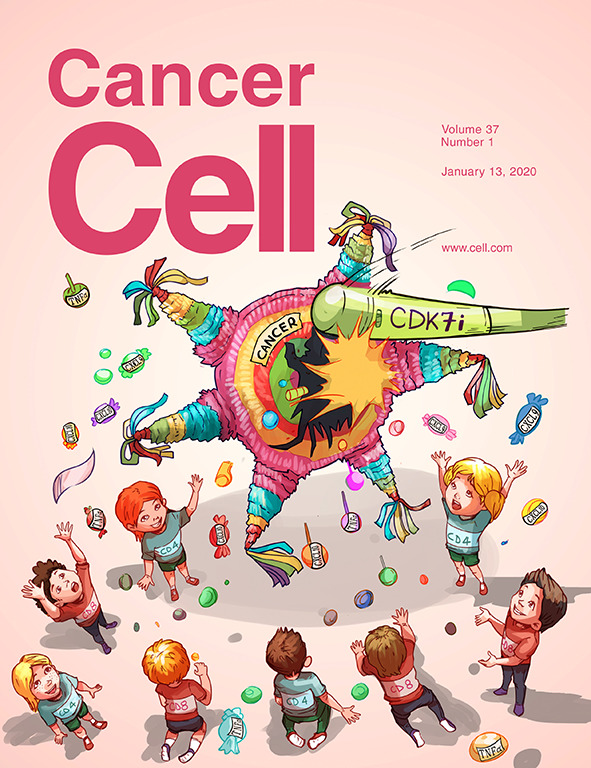TNBC的指南针:用细胞地图导航预后
IF 44.5
1区 医学
Q1 CELL BIOLOGY
引用次数: 0
摘要
在这一期的《Cancer Cell》杂志上,Meyer等人利用成像细胞术发现了一种与三阴性乳腺癌(TNBC)预后不良相关的茎样基底管肿瘤细胞。他们将这一发现与T细胞的空间结构结合起来,建立了一个预测预后和指导治疗的五亚型分类。本文章由计算机程序翻译,如有差异,请以英文原文为准。
TNBC’s compass: Navigating prognosis with a cellular map
In this issue of Cancer Cell, Meyer et al. use imaging mass cytometry and identify a stem-like basoluminal tumor cell linked to poor prognosis in triple-negative breast cancer (TNBC). They integrate this finding with T cell spatial architecture to establish a five-subtype classification for predicting prognosis and guiding therapy.
求助全文
通过发布文献求助,成功后即可免费获取论文全文。
去求助
来源期刊

Cancer Cell
医学-肿瘤学
CiteScore
55.20
自引率
1.20%
发文量
179
审稿时长
4-8 weeks
期刊介绍:
Cancer Cell is a journal that focuses on promoting major advances in cancer research and oncology. The primary criteria for considering manuscripts are as follows:
Major advances: Manuscripts should provide significant advancements in answering important questions related to naturally occurring cancers.
Translational research: The journal welcomes translational research, which involves the application of basic scientific findings to human health and clinical practice.
Clinical investigations: Cancer Cell is interested in publishing clinical investigations that contribute to establishing new paradigms in the treatment, diagnosis, or prevention of cancers.
Insights into cancer biology: The journal values clinical investigations that provide important insights into cancer biology beyond what has been revealed by preclinical studies.
Mechanism-based proof-of-principle studies: Cancer Cell encourages the publication of mechanism-based proof-of-principle clinical studies, which demonstrate the feasibility of a specific therapeutic approach or diagnostic test.
 求助内容:
求助内容: 应助结果提醒方式:
应助结果提醒方式:


